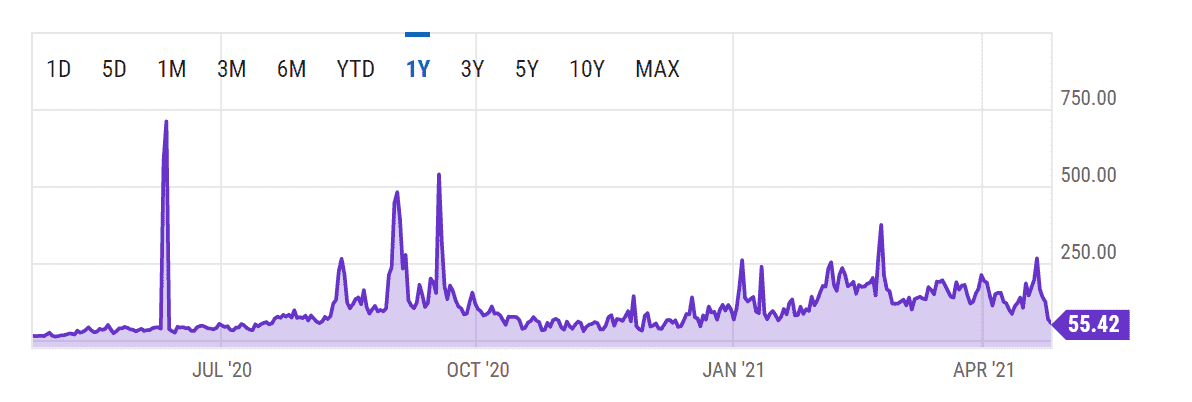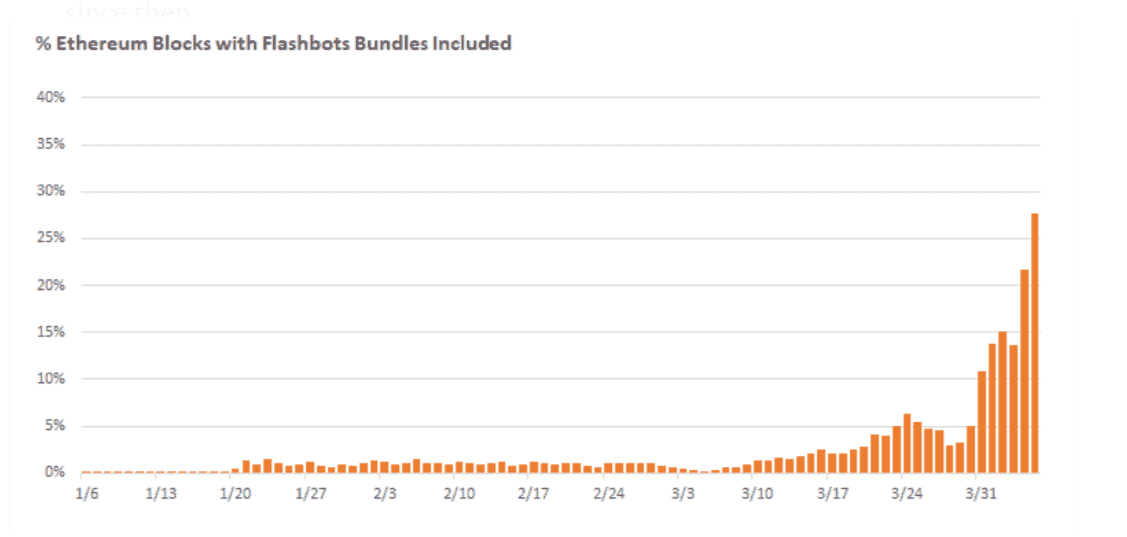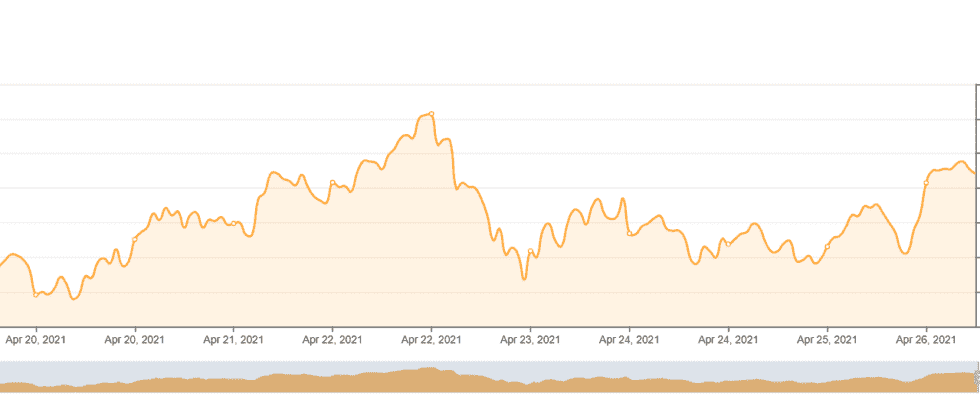Ethereum is back: After a bearish weekend, Ether (ETH) starts calendar week 17 with strong daily gains. At the same time, transaction fees are at their lowest level in months.
With a strong start to the week, the ether price can clearly recover from the sales of the past week’s end. At the time of writing, ETH is trading at $ 2.446.
The Ether price is almost 13 percent above the level of the previous day, at the all-time high of 2,640 USD, the ETH is only just 7 percent apart. At the same time, the network fees, which are considered one of the biggest weaknesses of the aging smart contract platform, are at their lowest level since the end of 2020. This is shown, among other things, by data from the blockchain analysts at Ycharts.



There are several possible reasons for the significantly lower gas fees. On the one hand, it could be a result of the recent Ethereum hard fork “Berlin”, in which hand was put on the gas fees for certain smart contract operations.
Flashbots: Ethereum’s MVP in the Fight Against Usury Fees
Another, possibly decisive, reason for the low fees could be the growing popularity of flashbots. Flashbots is an organization that deals with solutions for the MEV. MEV stands for Miner Extractable Value. The MEV serves as a metric for the profitability of mining and thus indirectly for network security. It includes both conventional gains from transaction fees and block rewards and “unconventional” gains from reordering transactions, inserting transactions, and censoring transactions within the block that a miner is producing.
Learn crypto trading
The entry-level course for trading Bitcoin and digital currencies
4 hours video course with professional trader Robert Rother
Since a block can make the difference between a lucrative trade and a zero or even a losing deal, especially in arbitrage trading, bots are widespread in this area. The consequence: Because every bot wants to see its transaction as quickly as possible in a block, the gas fees rocket – to the annoyance of the simple Ethereum user, who pays comparatively high fees for his small trade.
Flashbots has now developed a method by which MEV transactions can be determined and bundled. These MEV bundles are provided with a “tip” and sent directly to miners. This reduces the gas fees for the individual transactions within a bundle. Since the beginning of the year, more and more mining pools have been relying on Flashbots: As the project’s last transparency report shows, in mid-April almost every third Ethereum block contained Flashbot bundles. Trend: rising sharply.



It is true that the growing prevalence of Flashbots could not prevent gas fee price peaks such as last Friday. But the trend in gas fees definitely seems to be pointing south. It will now be interesting to see whether this development will continue – especially with a view to the next Ethereum upgrade, which will bring a new fee model to the network.
